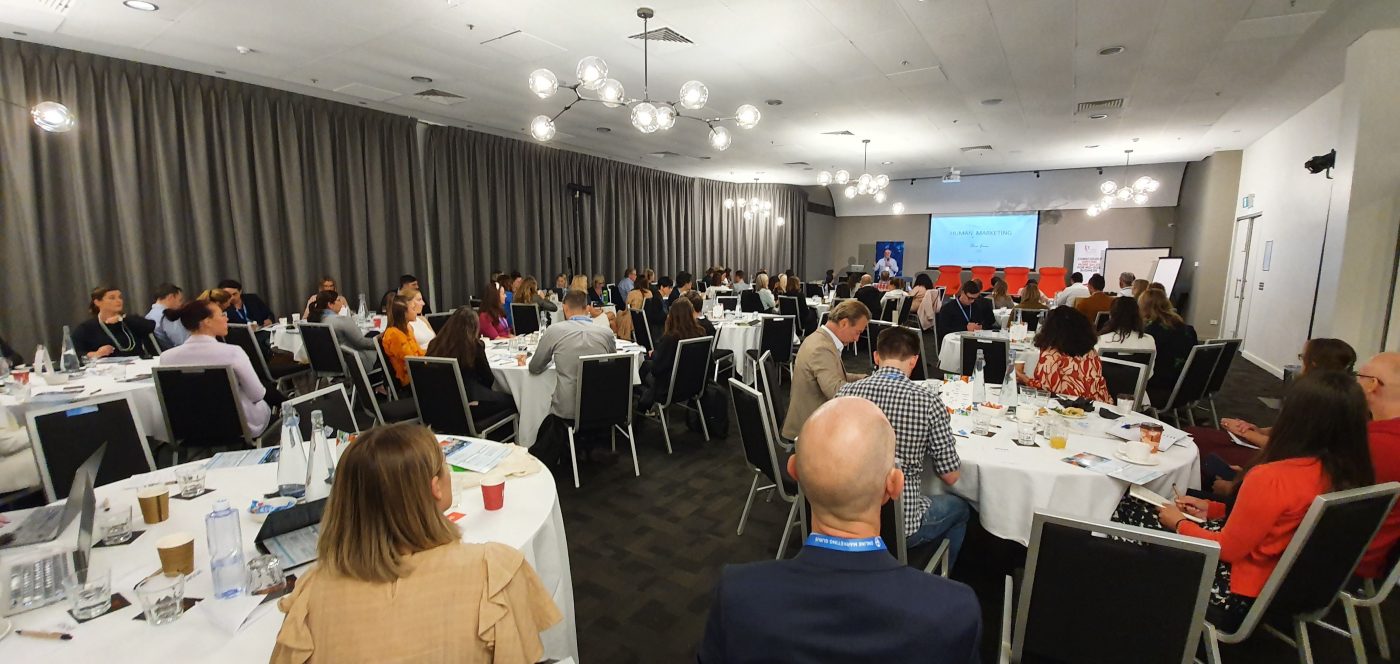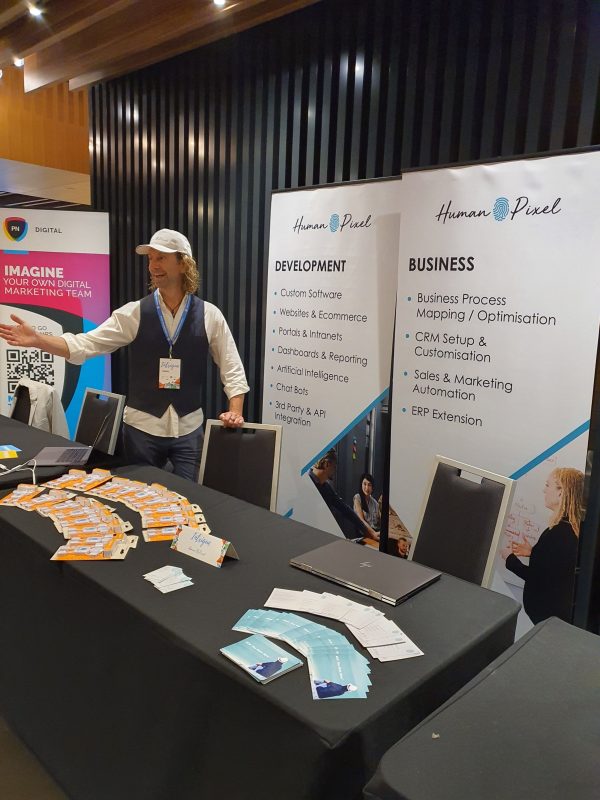“We need to get better at combining the human elements of marketing and technology. Use technology to help you be more human.”
This was the key takeaway from our CEO, Alex Kain during his speech to the audience at Intrigue Melbourne. Attendees received a presentation on modern marketing, specifically how technology can help us add a more human element to the way we market.
For those who couldn’t be there in person, we’ve summarised the key points of Alex’s presentation below.
First things first: Planning
No marketing campaign should go ahead without careful planning. At Human Pixel, we carefully map out everything about a business before we start. This gives us insight not only on the target audience, their characteristics and how best to market to them. But it also allows us to plan what happens next. What happens when our marketing works well, and what happens when people don’t click or don’t engage?
This kind of planning can be done manually, or using a range of tools that are available.
“As much as the technology has improved, what fails often is how we use that technology.”
Technology allows us to create workflows, triggers, automation and a range of other functions. But we need to ensure we’re using technology to create a human element in our marketing.

The Four Key Pillars of Marketing
Marketing is all about sending the right message to the right people in the right way at the right time. This can be broken down into what Alex refers to as the Four Pillars of Marketing – Content, Audience, Channel and Context.
Content
The content you deliver needs to be authentic. With all of the technology available today, customers are practically immune to the outrageous claims and hyperbole delivered by some marketers. What they’re really looking for is a connection. So, if you’re using data and planning correctly, the content needs to be genuine and relevant to they people you’re targeting.
Content can be delivered in many forms. It might be articles, the content on a landing page, email responses and even live chat conversations. The most important thing is that content is genuine and relevant across all channels. Technology can actually help us achieve that, rather than fighting against the human connection.
Audience
Understanding your audience is critical to your marketing success. The way to really understand who you’re marketing to is by using data.
“It used to be we could take one source of data and build a campaign on that alone, but this generally puts everyone into one bucket.”
What we really need to do is create multiple touchpoints to build a profile of our customers. These profiles are often referred to as ‘avatars’, and they’re essentially a group of characteristics that help you market accordingly.
For example, data can tell us that people who visit certain pages on our site are more likely to be looking to buy. On the other hand, customers who visit different pages may just be there for research.
By knowing more about what our customers like and what they don’t, we can ensure we’re sending the right messages to them, at the right time. We can start genuine conversations and create connections with customers. Also, we can deliver relevant and personalised content.
Channel
Data once again drives the way we choose our channels of marketing. Customers want to be served in a way that’s meaningful to them. The data we collect allows us to facilitate that. Our customer profiles (or avatars) give insight into their preferred way of receiving content.
Technology, for example a customer relationship management (CRM) system, can be an endless source of where to reach your customers. At Human Pixel, our CRM can tell us that certain customers are more likely to open emails between certain hours of the day. Therefore, we can schedule emails for a time that suits them best.
Again, this is an example of using technology to create a more human connection
with our customers.
Context
Context is all about placement and timing. You can have great messages, offers or other forms of content, but it can miss the mark if the timing isn’t right. One example of this is sending shopping deals during work hours. It may make a small impact, but people may not have the time to click through and take an action.
By putting your marketing in the right context, you allow customers a better chance of engaging with you. Marketing in the wrong context, for example by ignoring current social sensitivities can cause a backlash. Needless to say, this damages your brand, and renders all of your great content, audience research and use of the right channels irrelevant.

Marketing Needs a Human Touch
There doesn’t need to be a battle between technology and the human element of marketing. The two can actually work together to provide customers with a more meaningful experience tailored to them. However, this doesn’t work if we don’t get the 4 pillars of marketing right.
We need to work through these in the right order, or we risk missing the mark. Planning is crucial to ensure our messages are received by the right people, in ways and contexts that mean something to them. In that sense, there can be a fine line between giving someone a customised journey and completely missing out on their engagement.
Here are some ways to ensure genuine, meaningful engagement.
Make calls to action relevant
The whole purpose of marketing is to nurture people towards doing something. Whether it be filling out a form, making a purchase or even just making a call to your sales team. Where this falls over is when we don’t think carefully about what happens when customers reach the call to action.
Marketing doesn’t stop there – in fact, this is one of the key moments. Everything after the customer clicks that button needs to be relevant and easy. It needs to engage people the right way. For example, don’t make forms too long – you’ll lose that customer. If you direct people to a landing page, make sure it is relevant.
All of this ties in with adding a human element to your marketing by giving people content that is relevant to them.
Personalising messages
Personalising your messages is more than just sending an email with the recipients name rather than ‘to whom it may concern’. These days, customers need more than that to feel valued and properly served. Most people understand that emails are automated and live chat systems aren’t always a real person, and that’s ok. But what they do want is relevance.
For example, if a customer receives an email and doesn’t open it, you have three options. You can forget it and not bother them again. You can re-send the same email that didn’t catch their attention before. Or, you can send a slightly tweaked version of that message. Attempting to make that message more relevant to the customer can lead to engagement you may have missed the first time.
Customise each customer’s journey
CRM systems help us to personalise not just messages, but the entire customer journey. If you have enough data on customers, you can tailor their experience differently. For example, if a customer has visited a page previously, you know they’re interested, but something didn’t get them over the line on the first visit. So why serve them up the same content?
By showing them something different, you have an opportunity to engage them deeper. It’s data that allows you to do this, and no customer’s journey needs to be the same as anybody else’s.
Final Thoughts
Technology and marketing go hand in hand. Data fuels a lot of our planning, and we need to be more agile in how we get our messages out there. And while the technology at our fingertips is incredible, we don’t need to use it in a way that replaces the human side of marketing. Nor does our marketing need to be so human centred that we abandon all of the technological resources available. The two can work hand in hand, and we hope that this article and Alex’s speech at Intrigue 2020 in Melbourne has highlighted that technology can in fact be used to help us be more human.